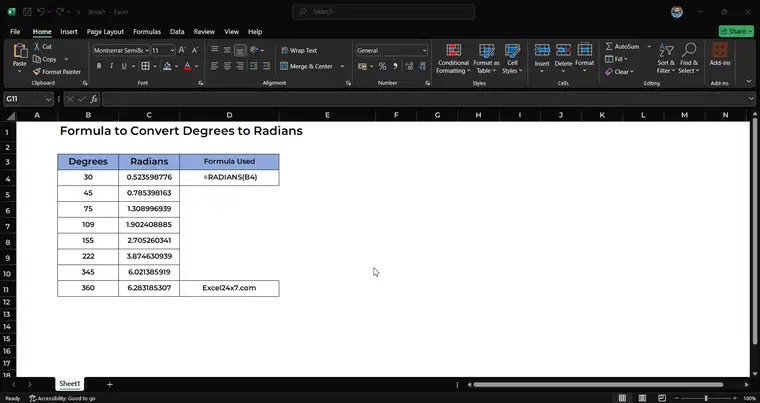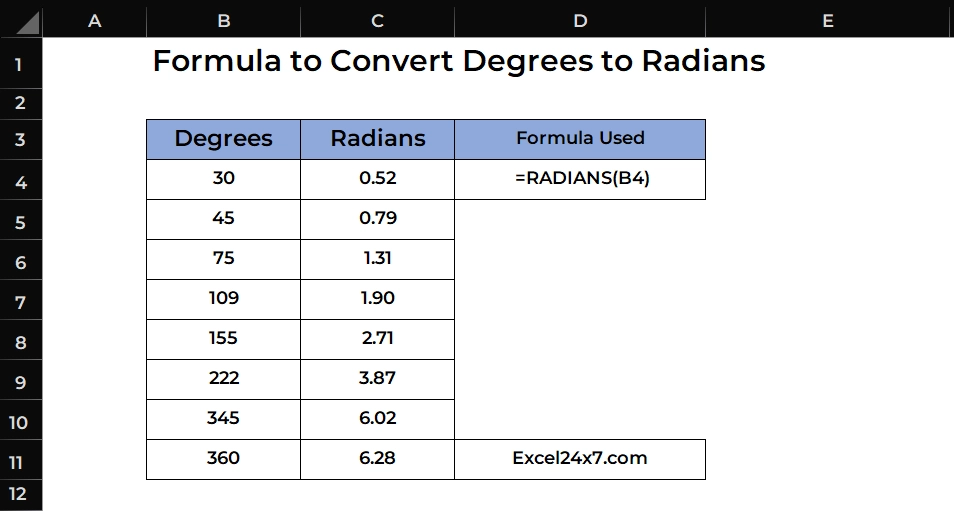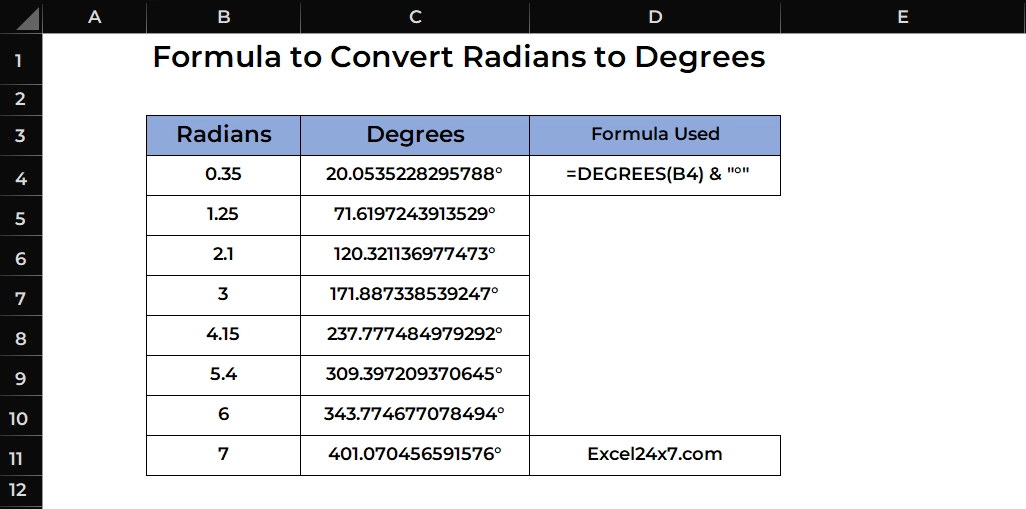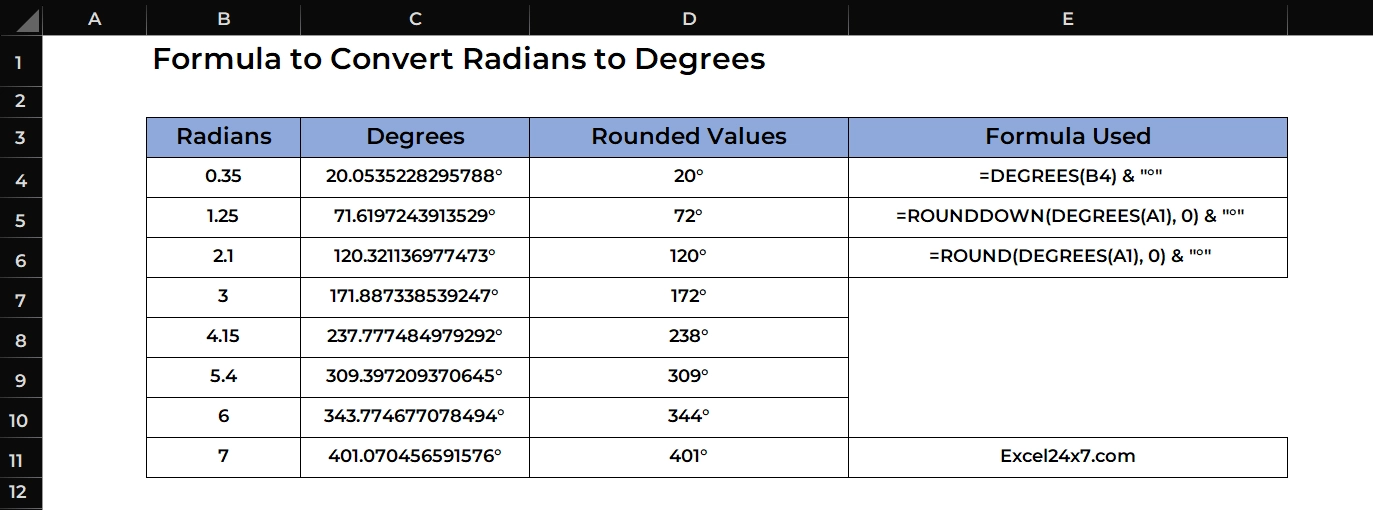How Can You Convert an Angle Between Degrees and Radians in Excel?
Before starting the tutorial, it’s important to understand degrees and radians. In Excel, they are used in trigonometric functions such as SIN, COS, and TAN, which need the angle to be in radians for accurate calculations. What is meant by Degrees? A degree is a unit for measuring angles, where a full circle is divided into 360 equal parts. For example, A right angle is 90 degrees, which is one-quarter of a full circle (360 degrees). What is meant by Radians? A radian is the angle formed when the arc length equals the radius of a circle, with a full circle being 2π radians. If a circle has a radius of 5 cm and the arc length is also 5 cm, then the angle formed at the center is 1 radian.This is because an angle of 1 radian is defined when the arc length equals the radius. Primary Differences Between Degrees & Radians: Aspect Degrees Radians Definition Full circle = 360° Full circle = 2π 2\pi radians Conversion Formula Multiply by π180 \frac{\pi}{180} Multiply by 180π \frac{180}{\pi} Use in Math Common in geometry and daily use Preferred in calculus and advanced math Symbol Uses “°” No symbol (or sometimes “rad”) Formula To Convert Degrees to Radians: In Excel, the RADIANS function directly converts a given degree value into its equivalent radian values. =RADIANS(B4) //outputs radian values. Degrees Radians 30 0.523598776 45 0.785398163 75 1.308996939 109 1.902408885 155 2.705260341 222 3.874630939 345 6.021385919 360 6.283185307 Converting Degree Values into Radians using RADIAN Function By default, the RADIANS function in Excel returns the result with more than 10 decimal places. You can format the cell to limit the result to 2 decimal places, as shown in the example below. To do this, You need to select the cells contains the output Radian values. Right click on the cells and choose Format Cells. Now, under the Category section, select Custom, and then choose the format “0.00” to display decimal values up to 2 decimal places. Format cells to display decimal values up to 2 decimal places The final formatted output is, Formatted Output Formula To Convert Radians to Degrees: Similarly in Excel, the DEGREE function directly converts a given radian value into its equivalent degree values. =DEGREES(B4) & "°" // ° is added to print the output with Degree symbol. Radians Degrees 0.35 20.0535228295788° 1.25 71.6197243913529° 2.1 120.321136977473° 3 171.887338539247° 4.15 237.777484979292° 5.4 309.397209370645° 6 343.774677078494° 7 401.070456591576° Converting Radian Values into Degrees using DEGREE Function As shown in the image above, the DEGREES function converts radian values into degrees. However, the result may display many decimal places, sometimes up to 10 digits. By using the ROUND Function or ROUNDDOWN Function, you can simplify the output to display the Degree values alone. =ROUNDDOWN(DEGREES(A1), 0) & "°" or =ROUND(DEGREES(A1), 0) & "°" Rounded Degree Values using ROUND and ROUNDDOWN Function Functions Used Description RADIAN Convert angle from degrees to radians DEGREE Convert angle from radians to degrees ROUND Round a number to a specified number of digits ROUNDDOWN Round a number down towards zero That’s it. –Narendhiran Vijayakumar. Feel free to comment us below, if you have any queries about the above topic and find more interesting excel tutorials on our homepage: Excel24x7.com.
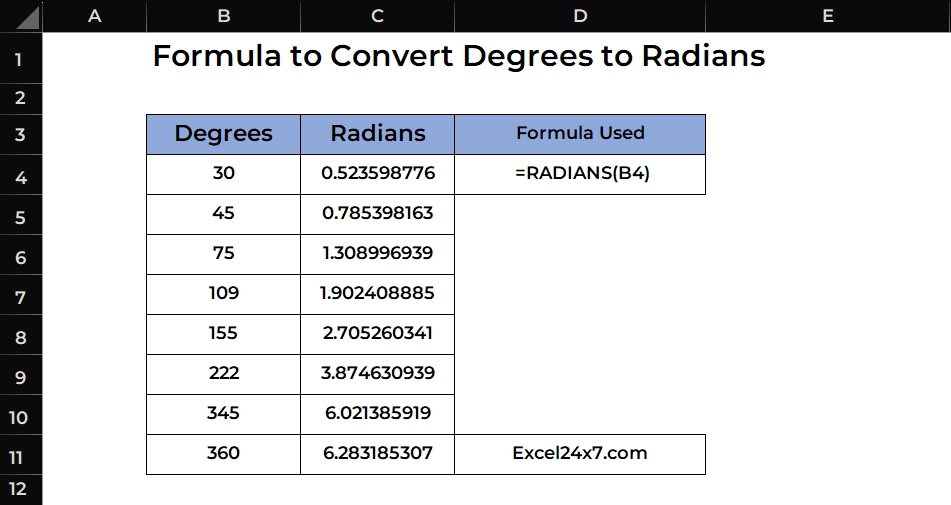
Before starting the tutorial, it’s important to understand degrees and radians. In Excel, they are used in trigonometric functions such as SIN, COS, and TAN, which need the angle to be in radians for accurate calculations.
What is meant by Degrees?
A degree is a unit for measuring angles, where a full circle is divided into 360 equal parts. For example, A right angle is 90 degrees, which is one-quarter of a full circle (360 degrees).
What is meant by Radians?
A radian is the angle formed when the arc length equals the radius of a circle, with a full circle being 2π radians. If a circle has a radius of 5 cm and the arc length is also 5 cm, then the angle formed at the center is 1 radian.This is because an angle of 1 radian is defined when the arc length equals the radius.
Primary Differences Between Degrees & Radians:
| Aspect | Degrees | Radians |
|---|---|---|
| Definition | Full circle = 360° | Full circle = 2π 2\pi radians |
| Conversion Formula | Multiply by π180 \frac{\pi}{180} | Multiply by 180π \frac{180}{\pi} |
| Use in Math | Common in geometry and daily use | Preferred in calculus and advanced math |
| Symbol | Uses “°” | No symbol (or sometimes “rad”) |
Formula To Convert Degrees to Radians:
In Excel, the RADIANS function directly converts a given degree value into its equivalent radian values.
=RADIANS(B4) //outputs radian values.
| Degrees | Radians |
|---|---|
| 30 | 0.523598776 |
| 45 | 0.785398163 |
| 75 | 1.308996939 |
| 109 | 1.902408885 |
| 155 | 2.705260341 |
| 222 | 3.874630939 |
| 345 | 6.021385919 |
| 360 | 6.283185307 |
Converting Degree Values into Radians using RADIAN Function
By default, the RADIANS function in Excel returns the result with more than 10 decimal places. You can format the cell to limit the result to 2 decimal places, as shown in the example below.
- To do this, You need to select the cells contains the output Radian values.
- Right click on the cells and choose Format Cells.
- Now, under the Category section, select Custom, and then choose the format “0.00” to display decimal values up to 2 decimal places.
Format cells to display decimal values up to 2 decimal places
The final formatted output is,
Formatted Output
Formula To Convert Radians to Degrees:
Similarly in Excel, the DEGREE function directly converts a given radian value into its equivalent degree values.
=DEGREES(B4) & "°" // ° is added to print the output with Degree symbol.
| Radians | Degrees |
|---|---|
| 0.35 | 20.0535228295788° |
| 1.25 | 71.6197243913529° |
| 2.1 | 120.321136977473° |
| 3 | 171.887338539247° |
| 4.15 | 237.777484979292° |
| 5.4 | 309.397209370645° |
| 6 | 343.774677078494° |
| 7 | 401.070456591576° |
Converting Radian Values into Degrees using DEGREE Function
As shown in the image above, the DEGREES function converts radian values into degrees. However, the result may display many decimal places, sometimes up to 10 digits. By using the ROUND Function or ROUNDDOWN Function, you can simplify the output to display the Degree values alone.
=ROUNDDOWN(DEGREES(A1), 0) & "°"
or
=ROUND(DEGREES(A1), 0) & "°"
Rounded Degree Values using ROUND and ROUNDDOWN Function
| Functions Used | Description |
|---|---|
| RADIAN | Convert angle from degrees to radians |
| DEGREE | Convert angle from radians to degrees |
| ROUND | Round a number to a specified number of digits |
| ROUNDDOWN | Round a number down towards zero |
That’s it.
Feel free to comment us below, if you have any queries about the above topic and find more interesting excel tutorials on our homepage: Excel24x7.com.



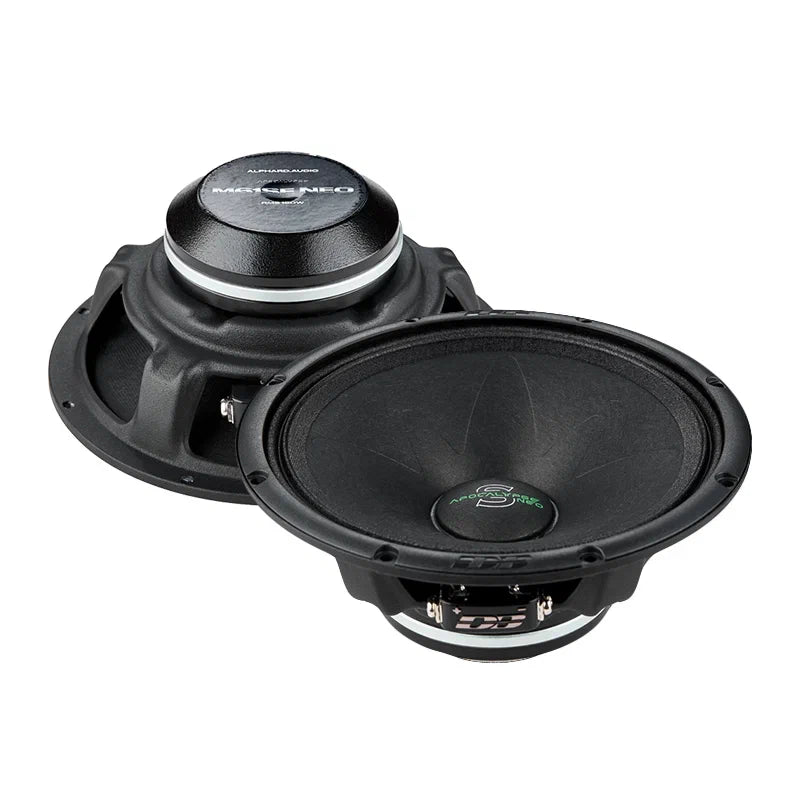














































































































































































![[The AI Show Episode 148]: Microsoft’s Quiet AI Layoffs, US Copyright Office’s Bombshell AI Guidance, 2025 State of Marketing AI Report, and OpenAI Codex](https://www.marketingaiinstitute.com/hubfs/ep%20148%20cover%20%281%29.png)


![[The AI Show Episode 146]: Rise of “AI-First” Companies, AI Job Disruption, GPT-4o Update Gets Rolled Back, How Big Consulting Firms Use AI, and Meta AI App](https://www.marketingaiinstitute.com/hubfs/ep%20146%20cover.png)
































































































































![Laid off but not afraid with X-senior Microsoft Dev MacKevin Fey [Podcast #173]](https://cdn.hashnode.com/res/hashnode/image/upload/v1747965474270/ae29dc33-4231-47b2-afd1-689b3785fb79.png?#)















































































































_MEGHzTK.png?width=1920&height=1920&fit=bounds&quality=70&format=jpg&auto=webp#)
-1-52-screenshot.png?width=1920&height=1920&fit=bounds&quality=70&format=jpg&auto=webp#)




















_David_Hall_-Alamy.jpg?width=1280&auto=webp&quality=80&disable=upscale#)
_Andriy_Popov_Alamy_Stock_Photo.jpg?width=1280&auto=webp&quality=80&disable=upscale#)




















































































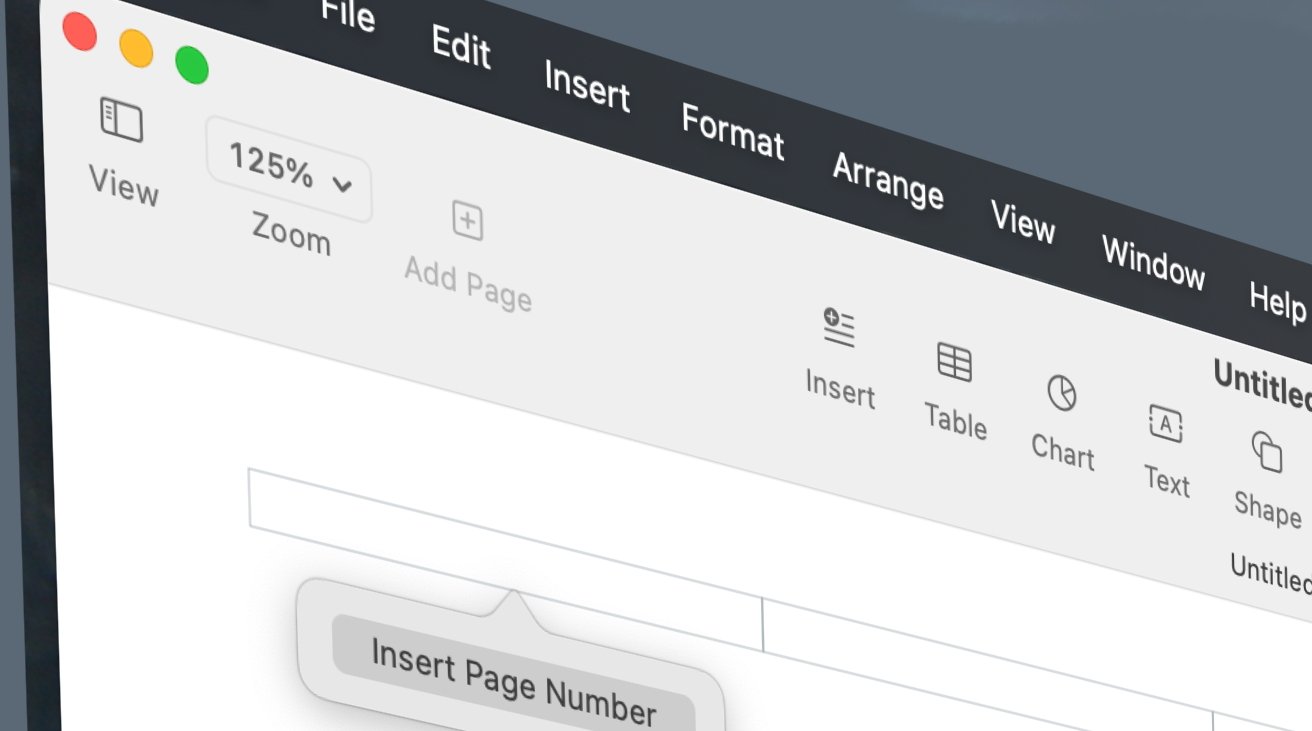
-xl.jpg)







![[Open Thread] Google may have changed the face of visual media forever, but is it for the good?](https://www.androidauthority.com/wp-content/uploads/2025/04/Veo-2-in-Gemini-on-an-Android-phone-scaled.jpg)























![Apple Shares Official Trailer for Season 2 of 'The Buccaneers' [Video]](https://www.iclarified.com/images/news/97414/97414/97414-640.jpg)
![Apple Highlights Ceramic Shield, Stolen Device Protection, and More in New Ads [Video]](https://www.iclarified.com/images/news/97416/97416/97416-640.jpg)

































































